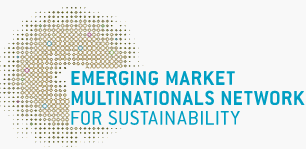To Explore a Sustainable Building Development Path in China
2022-11-18未知责任编辑0

By 2022, it has been over two decades since the development of the green building in China. Looking back at this development process, we can find that the biggest achievement is the clarification and clarity of the concept of green building, and the process of building culture and path confidence, laying a solid foundation for facilitating China's construction industry to achieve the goal of carbon neutrality as scheduled.
From blindly worshiping the West to
exploring the path with Chinese characteristics
The Beijing Charter issued by the World Architect Conference held in Beijing in 1999 played an important role in promoting the concept of green building in China, which was not well understood by many people in the domestic industry back then. After that, the real estate industry began to turn to "green building" with a focus on the selling point of "European style". However, various publicity reflected different understanding of green building, such as buildings with green space, high-end buildings, 3A/5A intelligent buildings, buildings with a low plot ratio, and buildings with constant temperature and humidity. Besides, some people regarded LEED, the American green building certification system, as an international standard, and deemed that only those with LEED certification could be said to be green buildings; some mistakenly believed that those with the products and technologies of western countries were green buildings. As a result, there appeared a number of LEED certified buildings with many expensive high-tech products and technologies in a short time. However, the actual measured building energy consumption was far higher than that of similar ordinary buildings in China.
From 1999, the team of Tsinghua University began to carry out research on green building. From then on, we began to learn and think about what green buildings are and what is the right path for sustainable building development in China. Through in-depth research and careful analysis of the building energy consumption data of China and western developed countries, as well as the gap between the two parties’ living patterns, adopted technologies, climate and resource conditions, it is found that the experience and assessment system of the United States and other western countries were not applicable to China's national conditions.
In fact, both building energy consumption per unit area and per capita in China are far below the energy consumption level of similar buildings in developed countries. Even Germany and Japan, which are recognized to perform well in building energy conservation, have much higher building energy consumption per unit area and per capita than China. Meanwhile, we also found that the human behavior mode and energy use concept are decisive among the important reasons for this significant difference. The traditional frugal lifestyle of Chinese people is more consistent with the concept of sustainable development, as well as the building environment control system and products we intend to develop. For example, we should implement the strategy of partial space, partial time and individual partial regulation of indoor environmental parameters, and protect the initiative of residents in indoor environmental regulation to the utmost extent; we should abandon the technical route of pursuing full time, full space and automatic control of constant temperature and humidity, and opposes the creation of a totally enclosed indoor environment for residents which is fully mechanized controlled and isolated from the external natural environment. The assessment system and standards of green buildings and energy-saving buildings developed in China should also be consistent with these ideas.
In fact, the above understanding we have obtained is quite even totally different from the traditional building environment construction technology used in western developed countries and the building energy saving technology developed on this basis, because the building energy conservation technology implemented by them is a "weight-loss" action based on their high energy consumption, while China aims to avoid repeating the "waste-before-saving" mistake made by western countries on the basis of comprehensively improving the living standard of Chinese people. Therefore, it is necessary to explore a sustainable building development path suitable for China. These explorations in China will also provide emerging developing countries with experience in their future development.

When we look back at China's green building field, great changes have taken place. From the beginning, Chinese people blindly worshiped the West, believing that China's building energy consumption was two to three times that of developed countries, and that the introduction of advanced technologies and products from Western countries could achieve building energy conservation in China. Finally, it was clarified that China's building energy consumption per capita or per unit area was far lower, and it was found that the Chinese energy conservation concept was more in line with the sustainable development, which was more advanced. We clearly realized that China should develop building design methods and energy products that conform to this advanced concept of energy use, and explore a sustainable building development path. Today, the trend of blindly worshiping the western experience and technology and blindly believing in their green building certification system has gradually disappeared. More technical research and engineering practice of sustainable development of urban and rural buildings were carried out in accordance with the characteristics of regional climate resources and people's living patterns in China. As a result, a number of excellent energy-saving building models and green building models have emerged.
The international influence of
Chinese scholars has gradually expanded
In the green buildings field, the scientific research achievements on building energy conservation and indoor healthy environment construction published by Chinese scholars have also had an increasing impact in the international academic community. Many Chinese scholars were invited to give speeches or lectures on international academic conferences or institutions, and take roles of chief editors and deputy chief editors of several famous international academic journals in this field. International academic organizations also employ more and more Chinese scholars. For example, in the International Society of Indoor Air and Climate (ISIAQ), one of the largest academic organizations in the field, the influence of Chinese scholars has risen rapidly. At present, the president of the Academy of ISIAQ Fellows and the president of the International Academy of Indoor Air Sciences (IAIAS) are both held by Chinese scholars. Chinese scholars also serve as presidents of several technical committees under ISIAQ. Among the 150 fellows currently employed by IAIAS, 12 are scholars from Chinese mainland, accounting for 8%. In the history of ISIAQ, 4 of the 12 winners of the Yaglou Award are from Chinese mainland, accounting for 1/3 of the total, and all of them won awards in the past 10 years. All of these can reflect the emergence of new forces in China's scientific research field. In the past 10 years, four international cooperation projects in IEA-EBC were initiated by scholars from Chinese mainland who served as project leaders, two of which were young scholars. It was the first time in history that Chinese scholars had led IEA's international cooperation projects.

The Assessment System for Green Building of Beijing Olympic, the first assessment system for green building in Chinese mainland, facilitated the construction of the Beijing 2008 Summer Olympics to achieve green and sustainable development. Besides, the 2022 Beijing Winter Olympic Games made a breakthrough in green buildings. Under the conditions of low temperature, all new venues not only met competition requirements, but also insisted on conservation of building energy, water, land and materials, and made full use of zero carbon energy, thus finally obtaining the three-star green building operation label in China. Therefore, the 2022 Beijing Winter Olympic not only promoted China to become a sports power and a snow and ice power, but also set a model for the green design and building of China's snow and ice sports venues.
The building field accounts for 1/3 of the global carbon emissions, and will play a decisive role in achieving China's carbon peak and carbon neutrality goals. For the construction industry, it is a huge challenge to not only satisfy people's increasing life demand, but also achieve carbon neutrality in 2060. Therefore, the construction and operation of green buildings are still crucial for China's construction industry to reduce carbon emissions. The proposal of the carbon peak and carbon neutrality goals brings not only great challenges to the industry, but also great opportunities for the healthy development of green buildings in China, which is also an important opportunity to share the "China’s Plans" for green buildings with the world.
Source: China Sustainability Tribune Website
Best Practices
- The 100-year brand — Air Liquide also has a sense of juvenile
- Beijing Public Transportation Corporation: Developing green transportation to build a harmonious and livable capital
- CGN: Building a modern factory in barren deserts and developing a new win-win cooperation model along “Belt and Road”
Upcoming Event

All the materials on the site “Source: XXX (not from this site)” have been reprinted from other media. They do not imply the agreement by the site.
All the materials with “Source: CSR-China Website” are the copyright of CSR-China Website. None of them may be used in any form or by any means without permission from CSR-China Website.
GoldenBee Official WeChat
Copyright © Csr-china.net All Right Reserved.
京ICP备19010813号










